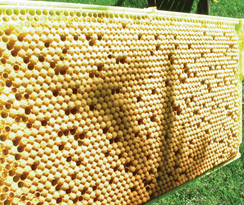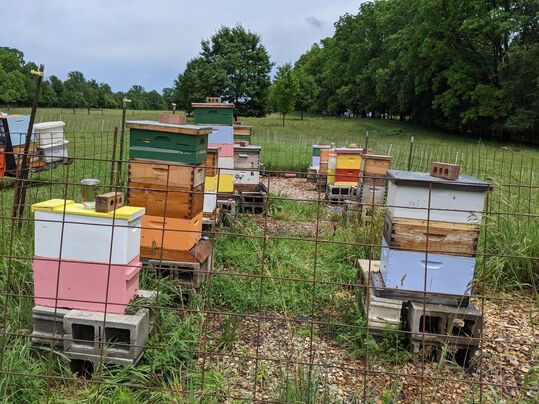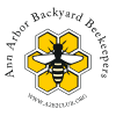 Alcohol The first step to integrated pest management of Varroa mites is testing your hives about once a month to monitor your mite levels so that you can treat at the appropriate time with the appropriate treatment. There are 2 validated testing methods for Varroa mites: 1) the powdered sugar roll, and 2) the alcohol wash. Of the two, the alcohol wash is easier and more accurate, but it does kill the tested bees (although properly done, the powdered sugar roll will also probably kill some bees). Both tests require 300 bees (½ a cup) collected from the brood chamber. Sticky boards are often advertised as a non-invasive way to test for Varroa mites, but these are not an accurate or useful way to test your mite levels. Testing is crucial to mite control because treating at the wrong time can be harmful to your bees and create resistance in the mites. There is an app called MiteCheck to help guide you in testing your bees for Varroa mites. Biters Think of IPM as a pyramid. At the bottom are preventative techniques and at the top are interventions/treatments. The base of preventative techniques is termed cultural. These include culling old comb (Varroa prefer old comb), introducing mite-resistant bee stock into your apiary such as Purdue Ankle-Biters, VSH (Varroa Sensitive Hygienic) or Saskatraz, and breaking the brood cycle (because the mites reproduce in the brood). Some models will also list small-cell comb as a cultural control, but recent studies have proven this is not an effective control of Varroa mites. Capture Next are physical or mechanical techniques. These include drone board removal or drone-trapping (which physically removes mites from the hive), screened bottom boards (which may prevent mites groomed from adult bees from crawling back on bees), and new products which heat the hives to temperatures at which mites cannot live. Some models will also list powdered sugar as a physical control of Varroa mites, but scientific studies have shown that the periodic application of powdered sugar by sprinkling it into hives is ineffective in controlling Varroa mites. More Information: https://pollinator.cals.cornell.edu/sites/pollinator.cals.cornell.edu/files/shared/documents/2020%20IPM%20for%20Varroa%20Mite%20Control.pdf
0 Comments
Leave a Reply. |
AuthorJen Haeger is a new master beekeeper and board member of A2B2. Archives
August 2022
Categories
All
|


 RSS Feed
RSS Feed
